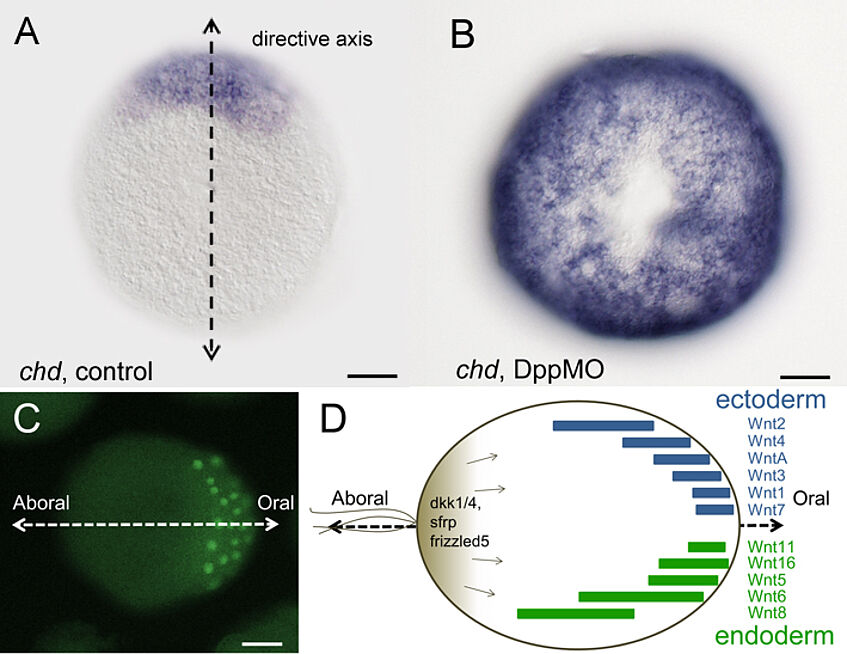
Dr. Grigory Genikhovich
Division of Molecular Evolution and Development
BioSketch
Team
Publications
Funding
I am interested in understanding how molecular mechanisms regulating animal body axes evolved. To find this out, I am using an excellent experimental model, the sea anemone Nematostella vectensis. It belongs to Cnidaria, a phylum consisting of morphologically simply organized diploblastic organisms, which occupies a crucial phylogenetic position as a sister group to all Bilateria (triploblastic animals with anterior-posterior and dorsal-ventral body axes). Intriguingly, true bilaterality exists also outside Bilateria, and Nematostella is one of such non-bilaterian bilaterally symmetric animals. We and others have shown that, similar to Bilateria, the patterning of Nematostella body axes is regulated by gradients of Wnt/b-catenin and BMP signaling. I am trying to decode the gene regulatory networks regulating axial patterning in Nematostella and compare the way a cnidarian patterns its body axes with the way bilaterians pattern theirs. This will shed light on the evolution axial patterning at the base of eumetazoan life and help us understand whether bilaterality has evolved once or more than once.
Funding: FWF
For further information please visit Orcid or NCBI or contact me directly at grigory.genikhovich (at) univie.ac.at
Teaching
I am currently teaching the following courses:
Introduction to animal development (together with U. Technau)
Introduction to molecular techniques
Experimental developmental biology (together with M. Walzl)
Animal body plans (together with many others)
Developmental biology of marine invertebrates (together with U. Technau)
Evolution and development (together with T. Hummel and S. Tebbich)

Wnt and BMP signaling regulate the body axes in Nematostella vectensis. Chordin expression, which is normally confined to one side of the blastopore (A), is radialized (B) upon a morpholino-mediated knockdown of NvDpp (bmp4 homolog). β-catenin fused to the fluorescent protein venus is observed in the nuclei on the future oral side of the blastula stage embryo (C), which has been injected with β-catenin::venus mRNA at the zygote stage (the β-catenin::venus construct was kindly provided by T. Momose, Villefranche-sur-Mer). (D) Different Wnt genes are expressed in the domains staggered along the oral-aboral axis in the ectoderm and the endoderm of the Nematostella planula. Aborally, both, Wnt receptor frizzled5 and secreted Wnt antagonists dkk1/4 and sfrp are expressed. Scale bars: 40 µm
